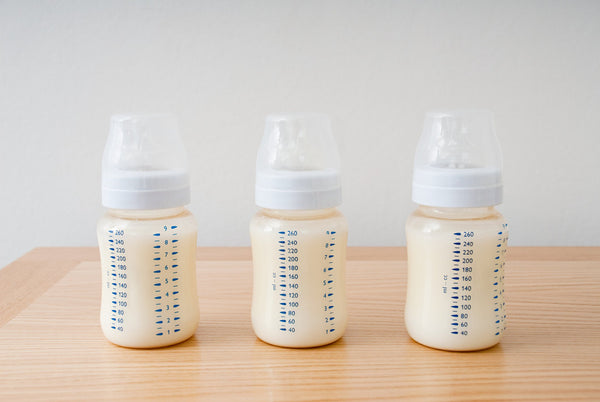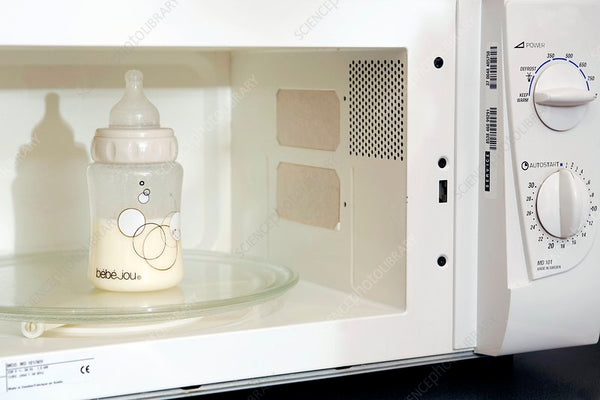If breast milk is warmed, how long will it stay good?
There are a lot of questions about breast milk. One question is, "How long does my breast milk last after it has been warmed up?
We've all been there: You've just warmed up a bottle of your baby's milk, only to discover that he or she doesn't want to drink it. To waste the liquid treasure you've produced with your breast pump is painful. But do we need to go this far?

How to Warm A Baby's Bottle To Room Temperature
While warming up your baby's cold breast milk, here are a few guidelines.
-
✦ Air-tight is all right.
Checking the seal is recommended whether the milk is stored in a bottle or a bag.
Even if you probably have done so before putting the milk in the freezer or fridge, it's still a good idea to double-check before bringing it to room temperature. The baby's feeding bottle should be appropriately sealed to prevent water from leaking into the environment and to keep out any contaminants. It's important to double-check the zip lock on the bag where your pumped or expressed breast milk is stored.
-
✦ Hot is too hot
Since "warm" to you means something a little hotter to them, this warming guideline is crucial to avoid the breakdown of nutrients in human milk and to reduce the risks that the baby can be scalded.
Avoid the common breastfeeding blunder of heating the baby's feeding bottle or storage bags straight in hot water or the microwave.
Heating the milk not only makes it more likely that you will get burned, but it also makes you lose more fat than it makes the milk break down faster. Because of this, the milk isn't as good for the baby.
The safest way to warm up a bottle is to use a bottle warmer to turn it around or to put some warm water in a bowl or mug and then put the bottle or storage bags in it, making sure the lid is not covered by water.
Frozen milk can also be thawed by holding it under a running tap or in lukewarm water for a couple of minutes until it reaches room temperature. Milk that has been frozen shouldn't be let to thaw at room temperature. But if you let the breast milk thaw first, you can heat it a little and use it immediately.
Based on medical advice, it is essential to note that leaving the milk at room temperature for more than 4 hours or placing it in the fridge or the refrigerator for more than 24 hours is unhygienic.
-
✦ Milk Mix
After letting the feeding bottle or storage bag sit in the water bowl for 30–60 seconds, it should be taken out and stirred or swirled every so often to ensure the heat is spread evenly and the fatty breast milk is spread out evenly to avoid hot spots.
Also, remember that if you don't follow this rule, the heat might not be spread evenly, which could make your baby cry.
-
✦ Test
This rule shows how important it is to test the temperature of the breast milk by putting a few drops from the bottle or storage bag on your wrist or the back of your hand. This is because your skin is not the same as your baby's, so you can't tell if it's too hot or too cold by looking at your skin.
Now that your baby's warm bottle is ready. How long can it be good before being discarded?

When warmed, how long may expressed breast milk be used?
Based on the report from experiential research and the general guidelines from the Academy of Breastfeeding Medicine, it could be said that the complete life cycle of pumped or expressed breast milk is always mapped at 2 hours after warming. Scientists have found that a warm environment is the best place for many bacteria to live. This is why the expiration time is 2 hours.
Opinion on Microwaving Thawed Breast Milk
Many parents or caregivers are tempted to microwave milk when a baby is hungry, and it must be rapidly reheated. To expedite the feeding, this quickens the procedure. However
It is never advised to microwave milk to preheat it.
There are two fundamental justifications for refraining from doing this.
- 1. No food or drink given to a baby should be reheated in a microwave. In a microwave, milk cooks unevenly and can produce hot patches that might burn your baby's lips. According to the American Academy of Paediatrics, uneven heating can scorch your child. The CDC offers the same advice. A prolonged heat might cause bottles to blow up. It is exceedingly challenging to regulate the temperature in a microwave.
- 2. Human milk is a fluid that is alive. Breast milk can lose important immune components when microwaved. High-temperature microwaving significantly reduces an object's anti-infective qualities. The beneficial proteins in milk are denatured and rendered inactive by overheating during the warming process, which also reduces the fat content of the milk.

Conclusion
It is comforting to know that your kid may still have your breast milk even when you are unable to provide it for them, whether it be a small number of bags in the event of an unexpected event or a large number of containers in preparation for when you go back to work. How you defrost and utilize your frozen breast milk is just as crucial as how you collect and keep it in the freezer. If you follow the instructions, your child and breast milk will have the best chance of being safe and healthy.
Avoiding too much heating for breast milk will keep its freshness and nutrients and makes the milk not to be watery. Research shows that if thawed breast milk is heated above 40-degree centigrade, it becomes more saturated and peradventure loses its thickness and nutrients.








